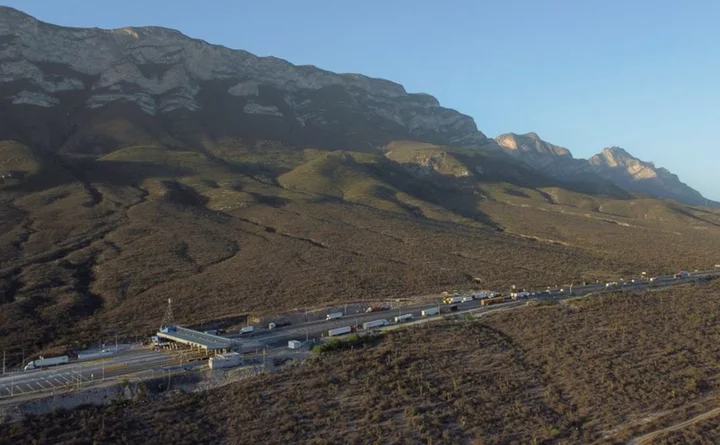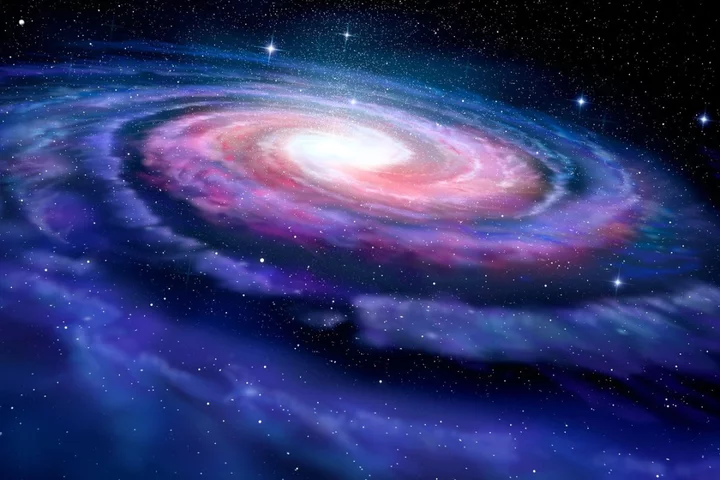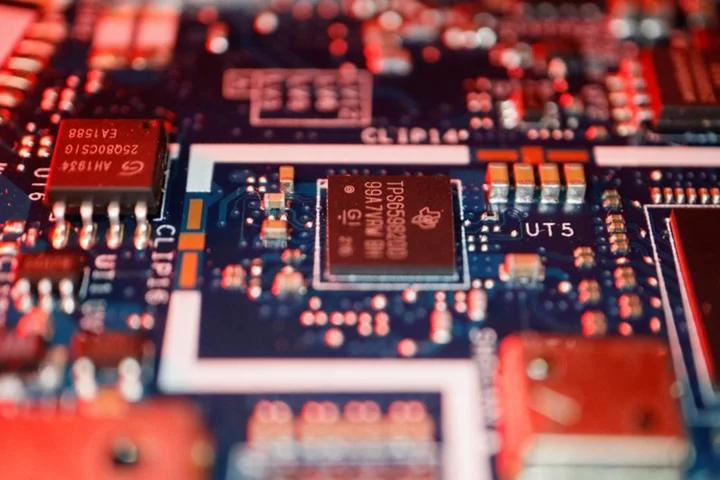
Is this the most advanced robot vacuum in the world? Meet the X2 Omni from Ecovacs
SAVE $300 WHEN PREORDERING: The new Ecovacs Deebot X2 Omni is available for preorder as
2023-09-23 03:21

US Dismantles Notorious Qakbot Botnet That Fueled Ransomware Attacks
US investigators say they’ve dealt a serious blow to the ransomware scourge by taking down
2023-08-30 01:46

A world's first: voxeljet presents groundbreaking cold IOB 3D printing technology at GIFA 2023
FRIEDBERG, Germany--(BUSINESS WIRE)--Jun 29, 2023--
2023-06-29 20:17

A hidden iPhone setting has been discovered that drains your battery
There's nothing worse than the dreaded 10 per cent battery alert kicking in while out and about and no charger at hand. Well now, a hidden iPhone setting that could be draining your battery has been revealed – and most people don't even know it exists. The 'Wi-Fi Assist' setting is a program to monitor your phone's connection. When there's no Wi-Fi, your phone automatically switches to 4G/5G. All the while, it will be working overtime in the background to maintain a connection with the Wi-Fi, despite it being on one bar. "For example, if you're using Safari with a poor Wi-Fi connection and a webpage doesn't load, Wi-Fi Assist will activate and automatically switch to cellular so that the webpage continues to load," the Apple website explains. While this is a great feature for smooth internet browsing, it could very well be draining out the battery life and mobile data. To turn this off, all you need to do is head to Settings > Mobile Data > Wi-Fi Assist and simply switch it off. To really max iPhone battery life, you can also use Low Power Mode, turn down the brightness and limit Location Services, which can be found in Settings > Privacy. Sign up for our free Indy100 weekly newsletter It comes after the news that the iPhone 15 Pro battery life could very set new records. According to reports, there are rumours of two major updates that involve prolonging that much-needed battery. Laptop Mag suggested that Apple users could expect a larger battery, without the need to bulk up the device. In June, Twitter leaker AppleTrack claimed to have information on the capacity of the iPhone 15. Have your say in our news democracy. Click the upvote icon at the top of the page to help raise this article through the indy100 rankings.
2023-08-03 19:16

Florida effectively bans advanced psychology course over LGBTQ content - course developer
By Sharon Bernstein Florida has told school superintendents that the Advanced Placement psychology course offered to high school
2023-08-04 07:17

AdsPostX Advances Retail Media 2.0 with New OmniSDK
SEATTLE--(BUSINESS WIRE)--Jun 7, 2023--
2023-06-07 21:15

Tesla factory permits almost ready in Mexico, as state launches infrastructure work
By Daina Beth Solomon MEXICO CITY (Reuters) -Final permits for Tesla to build an electric-vehicle (EV) factory in the northern
2023-10-06 06:26

Astronomers detect life ingredient on the edge of the galaxy
Astronomers have discovered a key ingredient for life at the edge of our Milky Way galaxy. A team from the University of Arizona detected the presence of phosphorus while studying molecular clouds on the outskirts of the galaxy using giant radio telescopes in the US and Spain. Phosphorus is one of the so-called NCHOPS elements that make up the critical ingredients for life on Earth – nitrogen, carbon, hydrogen, oxygen, phosphorus and sulphur. All of the others have already been found on the edge of the galaxy, so the discovery of phosphorus has direct implications for the search for Earth-like planets around distant stars. Their observations of the chemical 74,000 light-years from the centre of the Milky Way calls into question our fundamental understanding of the universe, the researchers said. “The phosphorus we detected is at the edge of the galaxy, where it shouldn’t be,” said Lilia Koelemay, a doctoral student at the University of Arizona who led the research. Theories that could explain its presence include supernova stars, which are typically not found on the edge of galaxies, and low mass stars generating excess neutrons that are then added onto silicon atoms to create phosphorus. “To make phosphorus, you need some kind of violent event,” said Lucy Ziurys, Regents Professor of chemistry and biochemistry and astronomy at Steward Observatory. “It is thought that phosphorus is created in supernova explosions, and for that, you need a star that has at least 20 times the mass of the Sun. In other words, if you’re going to have life, you better be near a supernova, if that’s indeed the only source where phosphorus is created.” The detection of phosphorus at the edge of the galaxy could motivate studies of distant exoplanets, the researchers hope, which have not been properly considered until now due to the assumed lack of the chemical. The research team now plans to examine other molecular clouds in the far reaches of the Milky Way to see if they contain phosphorus. Their discovery was described in a paper, titled ‘Phosphorus-bearing molecules PO and PN at the edge of the galaxy’, in the scientific journal Nature. Read More Astronomers find unprecedented ‘disc’ around distant planet Astronomers discover new six-planet system China unveils ‘foldable’ Mars helicopter in mission to return samples to Earth China unveils ‘foldable’ Mars helicopter in mission to return samples to Earth New images of Mars released by Nasa’s Odyssey orbiter Scientists find planets moving around in strange ‘rhythm’
2023-11-30 22:55

Mac Pro: Apple finally updates its most powerful computer
Apple has finally updated the Mac Pro, its most powerful computer. It is the first time the computer has received an update since 2019, when the most recent generation was revealed. Since then, it has been so neglected that some fans feared that it would be discontinued. But at Apple’s Worldwide Developers Conference, it announced that it would be updating the computer with Apple Silicon, its own chips. The new computer is up to three times faster than the previous version, Apple said. The new computer starts at $6,999. It is available to order now and will start arriving from next week. :: Follow The Independent’s live coverage of Apple’s event here Read More Apple just added loads of new features to your iPhone Apple is about to hold one of its biggest ever launches. Follow everything live here Apple reveals big version of its smallest laptop
2023-06-06 01:55

Biden aides tap Google chair for chips research effort, officials say
By Trevor Hunnicutt WASHINGTON The Biden administration picked the chairman of Google parent Alphabet, John Hennessy, and four
2023-06-20 23:29

Adin Ross warns HasanAbi of legal battle amid ongoing feud: 'I'll see you in court'
Here's the latest update regarding the ongoing feud between Adin Ross and HasanAbi
2023-05-12 18:21

Get two beginner-friendly Ninja drones for $220 off
TL;DR: The Ninja Dragon Phantom K Pro and Blade X Pro drones are on sale
2023-06-11 17:58
You Might Like...

ChatGPT founder says bitcoin is ‘super logical’ next step for tech

Get a refurbished touchscreen Chromebook for under $90

Ondine Biomedical Appoints Senior Pharma Executive Dr. Simon Sinclair as Chief Medical Officer

Dubai to start robotaxi trials next month in major autonomous push

Cut your tech costs and save 69% on this refurbished iPad Air

Miles Morales Joins Fortnite: All Items, Price, How to Get

This celebrity fitness app is only $200 for life

Adin Ross: Here's what we know about Kick star's diamond jewelry worth $5.2M
